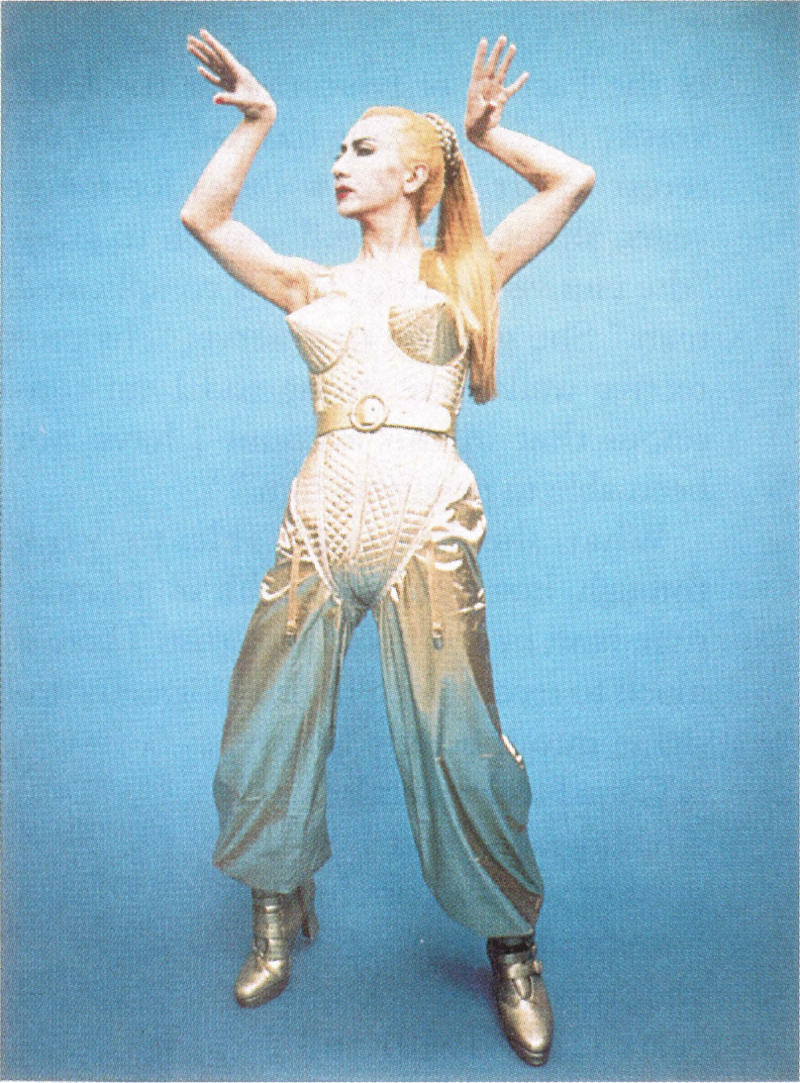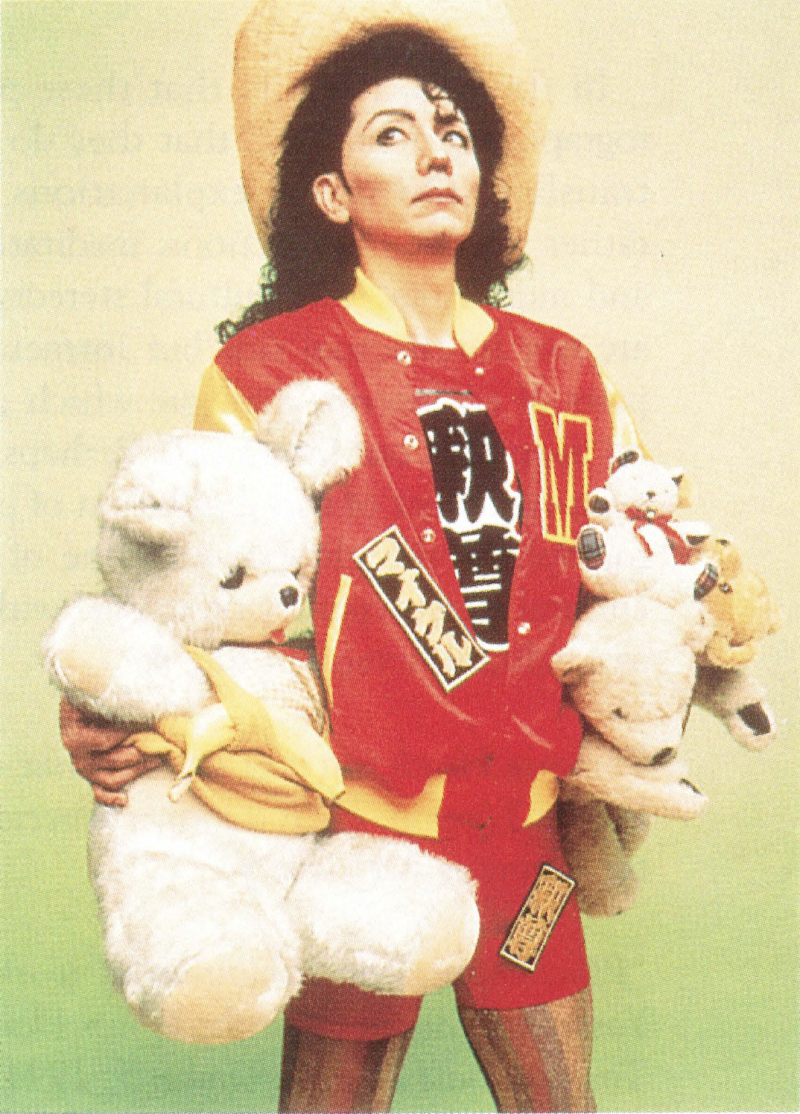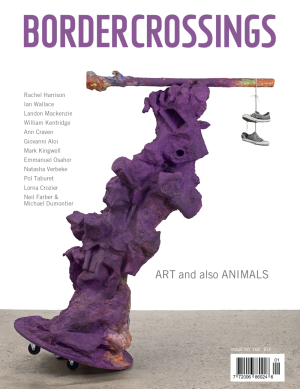On Cultural Stereotypes Looking at Each Other
As we tiptoe through the cultural byways, it comes as a shock to be face to face with an ugly old cultural stereotype that we had long ago relegated to the dustbin. However, as Chief Inspector Maigret would say, we are here concerned only with the truth and the truth is Morimura’s posturings before the camera in the guise of Michael Jackson and Madonna raised my stereotype of the Oriental from its comatose state: I found myself scrutinizing the face looking out at me from the large photographs, trying to see, what? Well, trying to see what his intentions were. And, what popped into my mind was, “He is inscrutable.” There it was out in the open. I rephrased it to, “I just don’t understand what he is trying to do,” etc. but basically it was the cultural stereotype of inscrutability that had me fast in its thrall.

Yasumasa Morimura, Psychoborg 9, 1994, Type C Print. Photographs Courtesy The Power Plant.
And, although I do not offer it as an excuse for my slip, I discovered in reading the catalogue essays that no one else could “read” him any better. The usual phrases taken from various theoreticians were offered—exploration of the boundaries of self, the nature of cultural and personal self-identification, knowledge of the Other as Self, gender as cultural determinant, the politics of gender identification and cross-cultural identity. One curator, Azby Brown, broke through the verbology by saying Morimura’s work is about love. That was a refreshing word amongst the other circumlocutory attempts to classify this visual work as illustrative of one theory or another. But it was still hard to see it in the work.
I come back to my own reaction. The work is inscrutable, or, at least, theoretically inscrutable. What you see is a middle-aged Japanese male dressed up as Michael Jackson and Madonna, and assuming poses which those two pop stars have made into universal trademarks. In some of the photographs, Morimura “mimes” the very facial expressions of the stars (as he did so dramatically without costume in his re-presentation of the nine persons depicted by Rembrandt in The Anatomy Lesson). But in others his own face looks out from behind the costume and the pose, often with a terrible vulnerability, as in the spread-legged Madonna in net stockings.

Psychoborg 5, 1994, Type C Print
Under his gaze, I realized that I was looking back at him with my guard momentarily down. The stereotype reversed and I was inscrutable to him, but terribly vulnerable in my almost desperate need to experience ecstasy. We faced one another—he with his cherry blossoms, raked stone gardens and tea ceremonies, and I with my deep illusionary spaces, personal salvation and teenaged glamour. He, dressed up as unisex idol and sex symbol; I, dressed up in a suit and tie. He, puzzled; I, puzzled. In the middle of large empty space with no one else nearby.
Someone tells me that the reality of cherry blossom time in Japan is that people go out and lie on their backs to look at the blossoms because they are too drunk to stand up. I read of Ito Jakuchu and the 18th-century schools of art in Japan dedicated to copying Chinese painting and poetry: “… his wry sense of humour and his pleasure in representing his subjects in a highly personal, whimsical and ironic manner.” So reads the catalogue. I watch my grandson put on his shades and don his loose fitting jacket to go walk in the town and my other grandson with his Mickey Mouse T-shirt eating Cheerios. A new study says, “… public galleries should think less about conserving and displaying art and more about serving their communities.”
In the end, I realize that these photographs are visual and that they do not translate into verbal explanations but rather into verbal reactions, meditations and mutterings. The cultural stereotypes are not intellectual sins but intractable parts of an interior dialogue which goes on in spite of our intentions. Perhaps the exciting aspect of this exhibition of photographs is the glimpse into one of our cultural stereotypes trying to deal with us as a cultural stereotype etc. ♦
Terrence Heath is a poet and art critic who lives in Toronto. He is a former Director of the Winnipeg Art Gallery.
“Psychoborg,” an exhibition of work by Yasumasa Morimura at the Power Plant in Toronto, June 24 to September 5, 1994.

